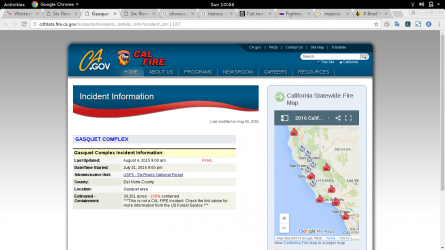While the example of Gasquet does not a sound argument make, let me answer the question; is California in a drought? By the historic record we are. The 20th Century was an unusually wet century.
But record keeping only goes back 165 years. Natural evidence (tree rings, sediment, etc) indicate that the region had much worse droughts during the last 1,000 years. So this relatively minor drought isn't a good piece of evidence for AGW
California drought: Past dry periods have lasted more than 200 years, scientists say
But record keeping only goes back 165 years. Natural evidence (tree rings, sediment, etc) indicate that the region had much worse droughts during the last 1,000 years. So this relatively minor drought isn't a good piece of evidence for AGW
California drought: Past dry periods have lasted more than 200 years, scientists say

